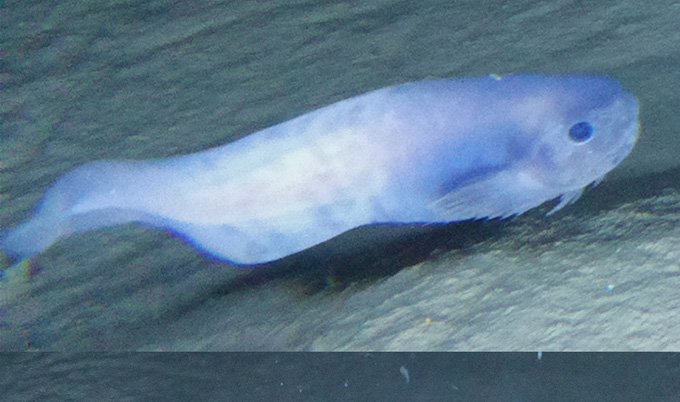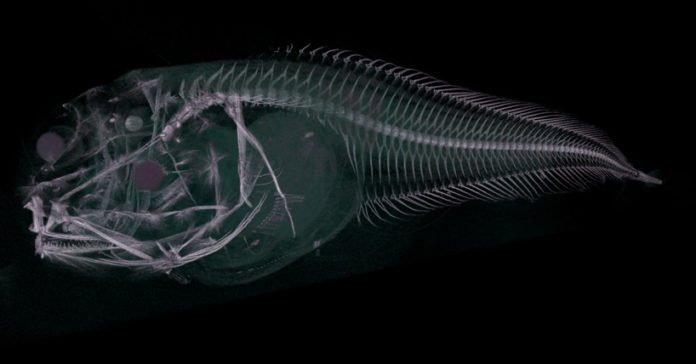While exploring the Atacama Trench, one of the deepest points in the Pacific Ocean, a team of 40 scientists from 17 different nations uncovered information about three new species of snailfish. They repeatedly lowered a device called a deep-sea lander overboard and watched as it sank into the cold, dark water.
Scientists have captured rare footage of what is believed to be three new species of the elusive Snailfish.
Temporarily named ‘the pink, the blue, and the purple Atacama Snailfish’, the footage shows the fish feeding and interacting in their secret world 7,500 meters below the surface.
The footage shows long snailfish with gelatinous structure. These fish are part of the Liparidae family and do not conform to the preconceived stereotypical image of what a deep-sea fish should look like.

Thomas Linley, a postdoctoral research associate at Newcastle University said, “As the footage clearly shows, there are lots of invertebrate prey down there, and the snailfish are the top predator. They seem to be quite active and look very well-fed.”
“The fish have no scales, and the hardest parts of their bodies are their teeth and the bones in their inner ear, which give them balance. These features help them live in the deepest reaches of the ocean.”
“Their gelatinous structure means they are perfectly adapted to living at extreme pressure. Without the extreme pressure and cold to support their bodies, they are extremely fragile and melt rapidly when brought to the surface.”
Amazingly, the team did manage to catch one the new species of snailfish which followed its amphipod prey into one of the traps. The single specimen was in very good condition and, following careful preservation.
Scientists acknowledged that the snailfish, with no giant teeth or “menacing frame,” don’t fit with “the preconceived stereotypical image of what a deep-sea fish should look like.” Indeed, sea creatures discovered in the deepest reaches of the ocean typically have distinctive characteristics that come with adapting to living under extreme pressure, in freezing temperatures and out of sunlight’s reach.
Though, scientists and engineers have been pioneering technology for the exploration of these ultra-deep environments for the last five years and have to date completed nearly 250 deployments of their novel ‘lander’ systems.
Using two full-ocean depth (11,000 m) capable landers equipped with HD cameras and traps the Newcastle team assessed the animals found within the trench.
As well as the snailfish, the team also filmed some astonishingly rare footage of long-legged isopods, known as Munnopsids, which are about the size of an adult hand. These crustaceans have small bodies, extraordinarily long legs and swim backward and upsides down, propelling themselves with paddles on their ventral side – their ‘tummies’ – before righting themselves on the seafloor and spreading their long walking legs out like a spider.
The snailfish will be featured as part of the Challenger Conference 2018 which kicks off at Newcastle University from today and runs until Friday.
